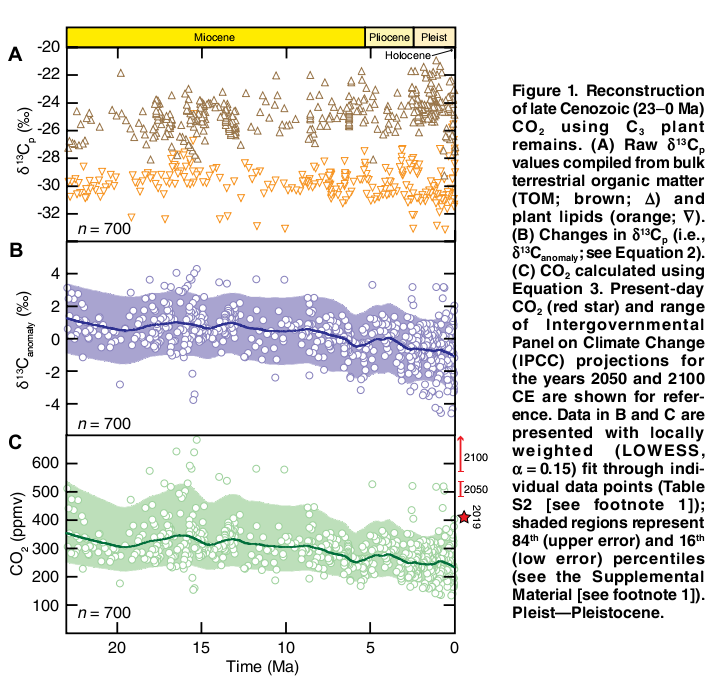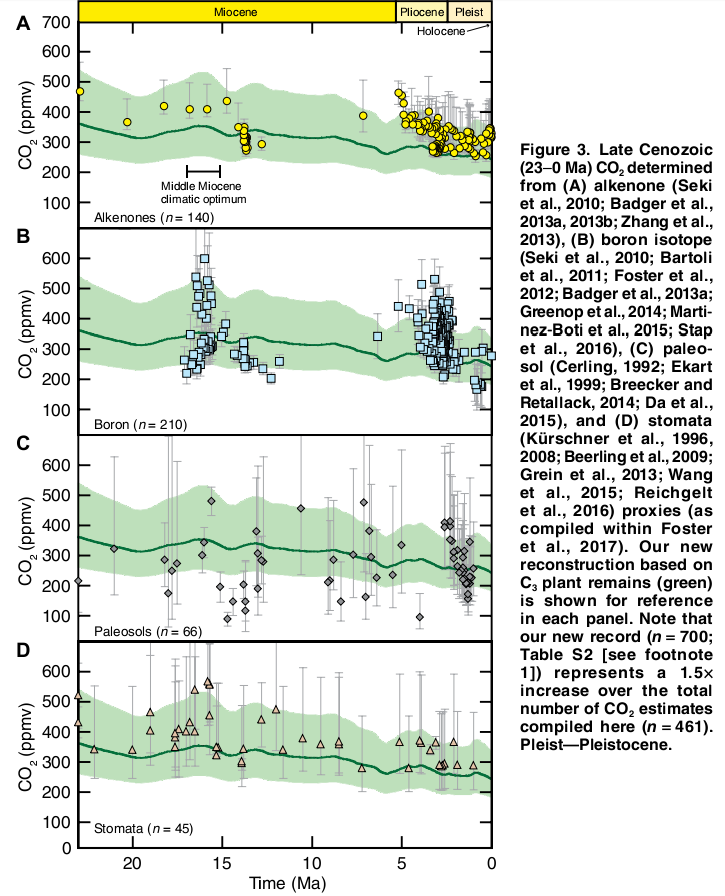According to a new study of fossil plant matter, CO2 concentrations haven’t been this high in at least 23 million years, and have never shot up this fast.
Lately we’ve been breaking a lot of records in terms of atmospheric carbon dioxide levels. In 2016 the South Pole became the last region on Earth to exceed a concentration of 400 parts per million (ppm). In May 2019, the Mauna Loa Observatory in Hawaii picked up a record new high of 415.26 ppm. Currently, levels are the highest they’ve been in all of human history.
When plants grow, they take in carbon dioxide from the atmosphere, and their tissues retain certain stable isotopes of carbon – specifically, carbon-12 and carbon-13. When these plants fossilize, scientists can study the amounts of these isotopes and determine the concentration of CO2 that the plants grew in.
Using this method, the researchers found that throughout this 23-million-year period CO2 levels mostly fluctuated between around 230 ppm and 350 ppm. That’s far less than modern levels. The team also found no increase in that time as sharp as the climb we’re currently experiencing.
Worse still, the most dramatic warming episodes in the last 23 million years were associated with fairly small increases in CO2. That includes the middle Miocene, which occurred between 15 and 17 million years ago, and the middle Pliocene of three to five million years ago.
The new study gives us further evidence of the severity of the challenge we’re now facing
https://newatlas.com/environment/co2-23-million-years-plant-fossils/
Miocene Climate
Climates remained moderately warm, although the slow global cooling that eventually led to the Pleistocene glaciations continued.
Although a long-term cooling trend was well underway, there is evidence of a warm period during the Miocene when the global climate rivalled that of the Oligocene. The Miocene warming began 21 million years ago and continued until 14 million years ago, when global temperatures took a sharp drop—the Middle Miocene Climate Transition (MMCT). By 8 million years ago, temperatures dropped sharply once again, and the Antarctic ice sheet was already approaching its present-day size and thickness. Greenland may have begun to have large glaciers as early as 7 to 8 million years ago, although the climate for the most part remained warm enough to support forests there well into the Pliocene.


